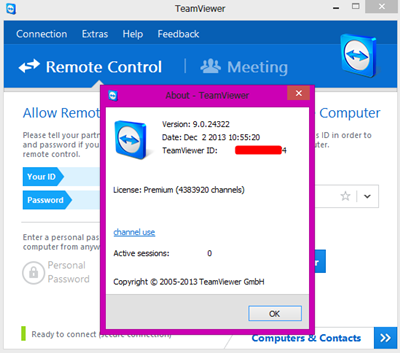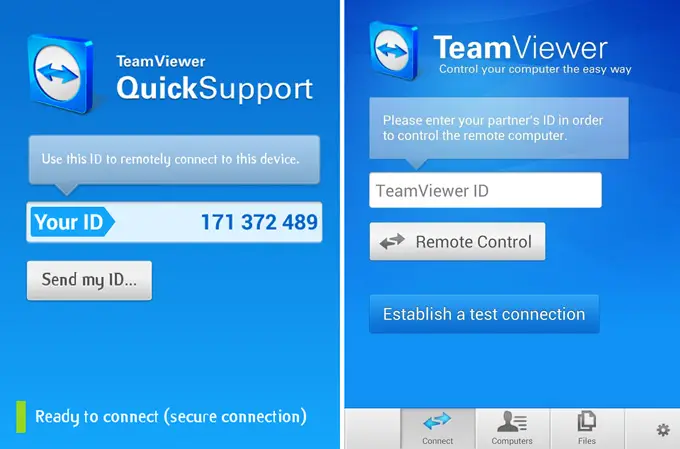
I can find no way to either retrieve the IP details automatically, nor to set them statically. The same dialog box is opened, but the command immediately returns with no text output. This allows me to create a VPN session to the remote machine. The VPN can be initiated from the command line: TeamViewer.exe -i -Password -m vpn The only way to achieve what you want is to use Windows Terminal Server. I would like to wrap this up in a script for deployment tasks. You can remote control the PC-B from PC-A, but this just means that the user in front of PC-A and the user in front of PC-B both see the desktop of PC-B and both can control the same (Windows) session on PC-B (with appropriate TeamViewer settings). Search for jobs related to Teamviewer multiple connections to same computer or hire on the worlds largest freelancing marketplace with 21m+ jobs.

This all works for a graphical interactive session. The same 7.x.x.x address is shown, even though the local network adapter is set to 192.x.x.x. Furthermore, when I override the settings and set a static IP address, it is not shown in the dialog box. However it's not true VPN in that it doesn't allow access to the entire remote network.Įach time a VPN session is created it uses DHCP IP addresses, handed out by a TeamViewer server ( 7.0.0.1). This sets up a direct IP connection between the two machines (host and client). You can then switch between the two remote sessions. Enter the ID and then the password of the second computer you wish to access. In the ‘General’ tab, you will find an option saying ‘Incoming LAN connections‘. Step 2: In the TeamViewer options, you should land by default on the ‘General’ tab.

At the Remote Desktop window, click the Plus tab. Step 1: To enable accepting requests over Local network on TeamViewer, open TeamViewer on your computer and click on the ‘Extras’ menu, and then click on ‘Options’. I've recently discovered that TeamViewer supports a "VPN" connection mode. You can also connect to more than one computer. I haven't found any way to automate or batch process tasks across multiple machines (eg copy same file to many, and ideally execute).


 0 kommentar(er)
0 kommentar(er)
